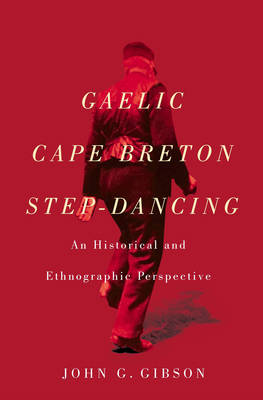
Nos liseuses Vivlio rencontrent actuellement des problèmes de synchronisation. Nous faisons tout notre possible pour résoudre ce problème le plus rapidement possible. Toutes nos excuses pour la gêne occasionnée !
- Retrait gratuit dans votre magasin Club
- 7.000.000 titres dans notre catalogue
- Payer en toute sécurité
- Toujours un magasin près de chez vous
Nos liseuses Vivlio rencontrent actuellement des problèmes de synchronisation. Nous faisons tout notre possible pour résoudre ce problème le plus rapidement possible. Toutes nos excuses pour la gêne occasionnée !
- Retrait gratuit dans votre magasin Club
- 7.000.0000 titres dans notre catalogue
- Payer en toute sécurité
- Toujours un magasin près de chez vous
75,45 €
+ 150 points
Description
The step-dancing of the Scotch Gaels in Nova Scotia is the last living example of a form of dance that waned following the great emigrations to Canada that ended in 1845. The Scotch Gael has been reported as loving dance, but step-dancing in Scotland had all but disappeared by 1945. One must look to Gaelic Nova Scotia, Cape Breton, and Antigonish County, to find this tradition. Gaelic Cape Breton Step-Dancing, the first study of its kind, gives this art form and the people and culture associated with it the prominence they have long deserved. Gaelic Scotland's cultural record is by and large pre-literate, and references to dance have had to be sought in Gaelic songs, many of which were transcribed on paper by those who knew their culture might be lost with the decline of their language. The improved Scottish culture depended proudly on the teaching of dancing and the literate learning and transmission of music in accompaniment. Relying on fieldwork in Nova Scotia, and on mentions of dance in Gaelic song and verse in Scotland and Nova Scotia, John Gibson traces the historical roots of step-dancing, particularly the older forms of dancing originating in the Gaelic-speaking Scottish Highlands. He also places the current tradition as a development and part of the much larger British and European percussive dance tradition. With insight collected through written sources, tales, songs, manuscripts, book references, interviews, and conversations, Gaelic Cape Breton Step-Dancing brings an important aspect of Gaelic history to the forefront of cultural debate.
Spécifications
Parties prenantes
- Auteur(s) :
- Editeur:
Contenu
- Nombre de pages :
- 496
- Langue:
- Anglais
- Collection :
- Tome:
- n° 2
Caractéristiques
- EAN:
- 9780773550599
- Date de parution :
- 04-07-17
- Format:
- Livre relié
- Format numérique:
- Genaaid
- Dimensions :
- 155 mm x 231 mm
- Poids :
- 857 g







